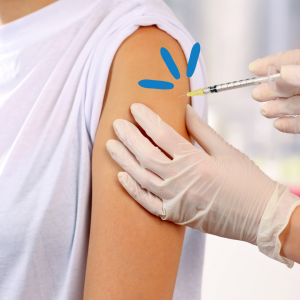
Your safety and the safety of the community is our concern
The COVID-19 world-wide pandemic has now reached Australia’s shores, and there is evidence of the virus spreading within Australia’s borders.
As such, there is now a 4-8 week timeframe before cases begin to rise significantly in Australia, and now will be the window of opportunity to prepare.
We have instituted stringent guidelines. Please do NOT enter the practice if you have recently returned from overseas, or are experiencing a fever, respiratory symptoms, or contact with someone at risk of Covid 19. Please telephone Ellen Health on 9239 0200, or call the Coronavirus Hotline.
National Coronavirus helpline
Call this line if you are seeking information on coronavirus (COVID-19) or help with the COVIDSafe app. The line operates 24 hours a day, seven days a week.1800 020 080.
Please visit the department of health website for up to date information.
Protect others and stop the spread
The virus spreads primarily through contact, through touching contaminated surfaces. It also spreads if someone coughs or sneezes on you directly. It may become airborne, if you leave the toilet seat cover open while flushing, or if you are unwell enough to develop complications like pneumonia.
It remains on surfaces for at least 48 hours.
We can all help slow the spread of COVID-19 in Australia.
To protect others you must:
- practice good hygiene
- practice physical distancing
- follow the limits for public gatherings
- understand how to isolate if you need to
What to expect from a person who is infected?
Main symptoms are: fever, dry cough and shortness of breath. You will also feel quite weak and lethargic ‘no energy’. It can sometimes begin with diarrhoea and vomiting, before progressing to a fever, cough and shortness of breath.
The main difference from a cold or flu, is that you are less likely to have a runny nose, or muscle aches and pains, although it is still possible (6-11%).
First week: most people have mild symptoms.
Second week: some people may start to become more unwell, and develop a pneumonia. The second week is the crucial week. Patients either have strong enough immune systems to fight the virus, or succumb to it.
At present, there are no effective anti-virals or treatment for this virus.
Third to Fourth week: usually the recovery phase, OR progressive deterioration and eventually death.
Risk Factors for more severe disease
If you have any of the following conditions, you may want to consider taking more stringent measures to protect yourself.
-
Cardiovascular disease
-
Diabetes
-
Chronic respiratory disease
-
Hypertension
-
Cancer
-
Immunosuppressive medication
A high percentage of >70 year olds will develop a severe form of the infection.
Optimistic forecasts are that a vaccine will be available in 2021. An anti-viral is under clinical trials in China at present, and if successful, we will hear about it in a few month’s time (June/Jul 2020).
Both the vaccine and anti-viral are not expected to be available in Australia before the virus infects a significant proportion of the community.
Strategy
While it is expected that many people in the community will catch the virus sometime in the next 6-12 months, what we want to avoid is masses of people becoming unwell at the same time, so as to ease pressure on health and emergency services.
We want a ‘controlled burn’, rather than a ‘wildfire’.
We can achieve a ‘controlled burn’ by being fanatical with simple measures like:
-
Washing hands before and after touching any surfaces in public
-
Coughing and sneezing into your ELBOW, not hands
-
Keeping toilet seat cover CLOSED when flushing
-
“Pat on the back” or “bow”, instead of handshake
-
Reducing exposure to large group gatherings
-
Staying home if you are unwell
Practice 1-4 starting from now, so it becomes a habit.
Key Motto
Look after yourself, look after your family, look after your neighbours!
Look after yourself
Consider:
-
Extra 1 month supply of prescription medications, inhalers and disposable products as there may be interruptions to supply
-
Medications like paracetamol and ibuprofen can help make us feel less sick
-
Alcohol-containing hand rub and soap
-
Household cleaning agents and disinfectants
-
Disinfectant: anything containing benzalkonium chloride is good for coronavirus.
-
Alternatively, diluting 1 part bleach (4% white king is suitable) with 7 parts water makes a excellent hospital-grade disinfectant (0.5% sodium hypochloride). However, you will need to make a fresh batch each time, as diluted bleach degrades quickly in a month.
-
-
Consider organising pick-ups of groceries. Coles has an online ‘click and collect’ facility, and Foodworks – you can phone in advance and pick-up groceries at the drive-through.
Look after your family
Do you have:
-
Separate bedroom where patient can recover without sharing immediate space with others?
-
Access to food and other necessities?
-
Access to personal protective equipment, at minimum gloves and facemask?
-
A thermometer?
-
Patient and household members capable of adhering to respiratory (coughing into elbow, NOT hands) and hand hygiene (frequent hand-washing or use of alcohol hand rub)?
-
Are there household members who are at increased risk of complications from COVID-19? ie. immunocompromised, elderly etc.
Infection Control Procedures at home:
-
Place patient in well-ventilated single room (windows open if possible)
-
Minimise shared spaces (ie. bathroom, kitchen)
-
House-hold members should maintain a distance of at least 1m from patient
-
Limit the number of caregivers for the patient. Ideally one person should be assigned.
-
Hand hygiene after any contact with patient or objects in their environment
-
Mask should be provided to patient and worn whenever in close contact with others
-
If masks cannot be worn, then nose and mouth needs to be covered with disposable tissue paper when coughing or sneezing
-
Mask should be worn by care-giver. Mask should be tightly fitted over nose and mouth. Remove the lace from behind, and do not touch mask from the front
-
Avoid direct contact with bodily fluids
-
Use dedicated linen and eating utensils for patient
-
Clean and disinfect frequently touched areas in patient’s environment, including bathroom DAILY using:
-
Detergent first, then after rinsing
-
0.5% sodium hypochloride (1 part household 4% bleach to 7 parts water)
-
Use protective clothing during cleaning (ie. plastic apron), and if using utility gloves, ensure they are washed and sterilised with 0.5% sodium hypochloride
-
Other household disinfectantswith “benzalkonium chloride” will suffice as well
-
-
Laundry
-
Machine wash at 60-90 degrees
-
Avoid direct contact with the skin and clothes with contaminated laundry
-
-
Waste generated during the care of the patient should be placed in a waste bin with a lid in the patient’s room before disposal
Monitoring of Vital Signs
-
Assess twice daily and record in a book
-
Heart Rate/min – feel their pulse on their wrist or neck, and count the number of beats in 20 seconds, then multiply by 3.
-
Respiratory Rate/min – look at the rise and fall of their chest. Count the number of breaths in 20 seconds, then multiply by 3.
-
Temperature – use a thermometer, not your hands!
-
-
When to report to a doctor or nurse URGENTLY
-
If Heart Rate is consistently >100 beats/min for >5 mins
-
If Respiratory Rate is >25/min
-
If having a fever >37.5C for a least 4 days
-
-
Call 000, and report IMMEDIATELY if
-
Experiencing difficulty breathing
-
Feeling severe drowsiness
-
Lips are ‘turning blue’
-
Links with Health Services
Know the telephone numbers you can phone, if you are unsure or are seeking help. Record them in your phone, or place it on your fridge.
Make sure you phone in advance, before presenting in person, so health care workers may be prepared for your arrival.
Look after your neighbours
Are your neighbours isolated at home? Do they need deliveries of food or medication you can leave at their doorstep? Do they need encouragement?
Summary
By preparing now, you can reduce the impact of the virus, and cope better in the coming weeks and months. I strongly advise you to start now.
Disclaimer
Feedback has been sought from subject matter experts and the community. This factsheet is meant to supplement, not replace any formal advice issued by a formal health authority. Please follow any instructions issued by any formal health authority and your doctor in the coming weeks and months, for your safety and the rest of the community.
This Factsheet is based on:
“Covid 19: Managing Successfully at Home – Community Factsheet – Version 2”
Sources:
-
WHO Home Care Recommendations for Covid 19 – accessed 15th Feb 2020
-
CDC Interim Guidance for Implementing Home Care of People Not Requiring Hospitalisation for 2019 Novel Coronavirus (accessed 25th Feb 2020)
-
CDC Best Practices for Environmental Cleaning in Healthcare Facilities in Resource-Limited Settings https://www.cdc.gov/hai/pdfs/resource-limited/environmental-cleaning-508.pdf
-
Home Isolation Guidance – Australian Department of Health (Federal), accessed 4 Mar 2020
-
DDHS Victoria – Factsheets – confirmed case/suspected case, accessed 4 Mar 2020
-
“Covid 19: Summary of Current Clinical Evidence for GPs” accessed 3 Mar 2020


